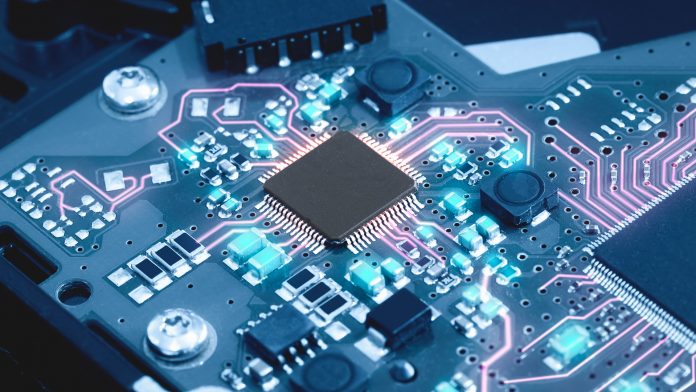A team of researchers has manufactured the world’s fastest and most power-efficient analogue-to-digital converter (ADC) microchip.
The team, comprised of Brigham Young University scientists, has developed a record-breaking ADC microchip that far exceeds previous technology in both speed and efficiency, potentially advancing a plethora of mobile device technologies.
ADC microchips are an essential component of a vast array of everyday technology, such as mobile phones and tablets, where they convert analogue signals into digital signals, with tech giants competing each year to bring consumers the most lightning-fast user experience. Nevertheless, this novel innovation from Brigham Young University researchers seemingly blows all prior iterations out of the water.
Their creation expends a mere 21 milli-Watts of power at 10GHz for ultra-wideband wireless communications, compared to other microchips that consume hundreds of milli-Watts, with this new ADC microchip boasting the highest power efficiency in the world by a landslide.
Professor Wood Chiang, one of the leaders of the research, said: “Many research groups worldwide focus on ADCs; it’s like a competition of who can build the world’s fastest and most fuel-efficient car. It is very difficult to beat everyone else around the world, but we managed to do just that.”
To accomplish this feat, the researchers enhanced a specific component of the ADC circuit called the DAC – which stands for the exact reverse of ADC – digital-to-analogue converter. By doing this, they could achieve higher bandwidths without requiring additional power consumption, therefore boosting efficiency.
Speed and efficiency were improved by scaling the capacitor parallel plate area and spacing, which reduced the loading from the DAC, additionally grouping the capacitors in an alternative way so that they could work more harmoniously within the system. In doing so, the bottom-plate parasitic capacitance was significantly lowered by three times, decreasing power consumption while simultaneously increasing speed. The final advancement was made by utilising a bootstrapped switch with specially optimised dual paths, this allowed for the speed to be increased without requiring additional hardware.
Chiang said: “We’ve proven the technology of the chip here at BYU and there is no question about the efficacy of this particular technique. This work really pushes the envelope of what’s possible and will result in a lot of conveniences for consumers. Your Wi-Fi will continue to get better because of this technology, you’ll have faster upload and download speeds and you can watch 4K or even 8K with little to no lag while maintaining battery life.”
The team are optimistic that their ACD microchip technology can help to further advance autonomous vehicles and smart wearables.









